
How to Use 1.54'' TFT Display 240x240 spi ST7789: Examples, Pinouts, and Specs
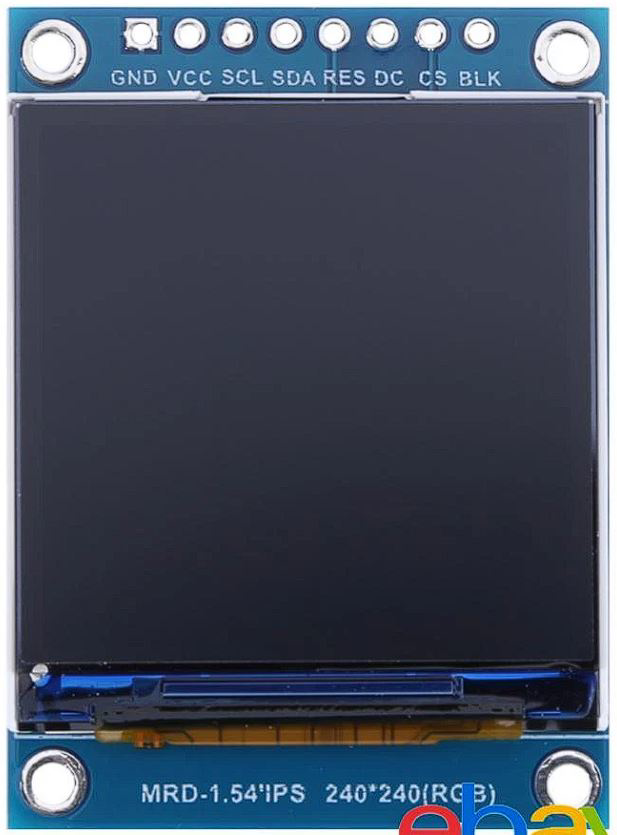
 Design with 1.54'' TFT Display 240x240 spi ST7789 in Cirkit Designer
Design with 1.54'' TFT Display 240x240 spi ST7789 in Cirkit DesignerIntroduction
The 1.54-inch TFT Display is a compact and vibrant display module with a resolution of 240x240 pixels. It utilizes the ST7789 driver and communicates via the SPI (Serial Peripheral Interface) protocol, making it an excellent choice for embedded systems and small devices. This display is ideal for applications requiring a high-quality graphical interface, such as IoT devices, handheld gadgets, and wearable electronics.
Explore Projects Built with 1.54'' TFT Display 240x240 spi ST7789
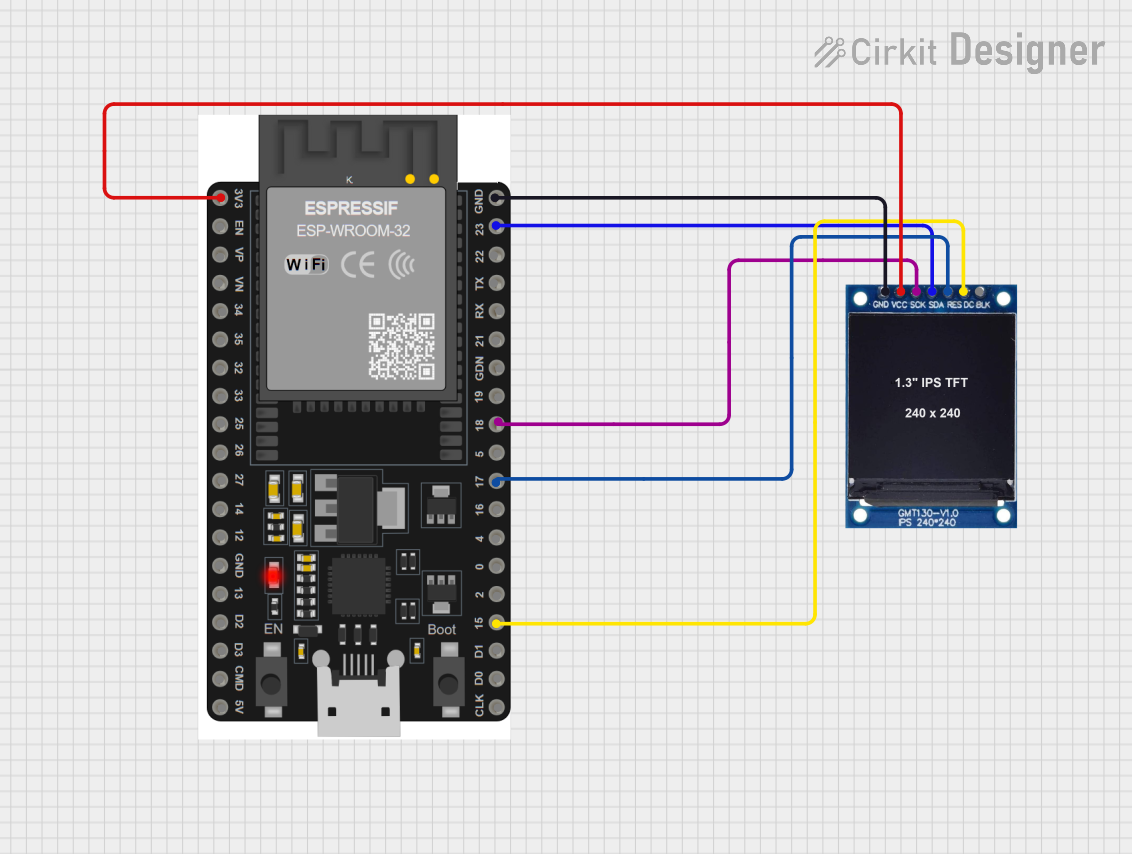
 Open Project in Cirkit Designer
Open Project in Cirkit Designer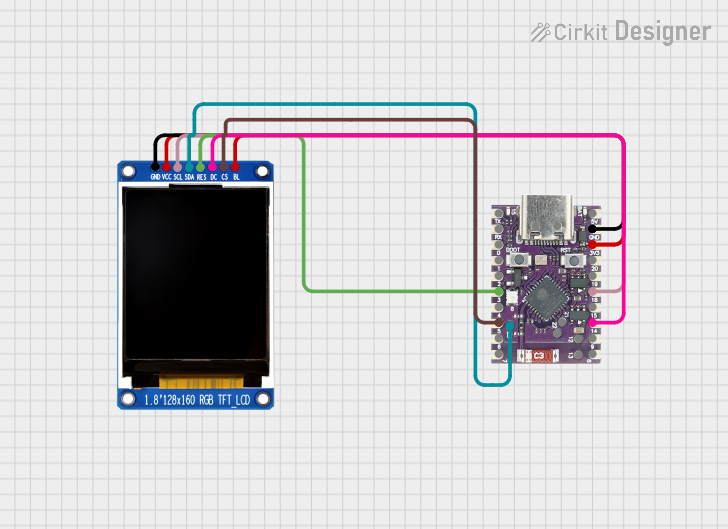
 Open Project in Cirkit Designer
Open Project in Cirkit Designer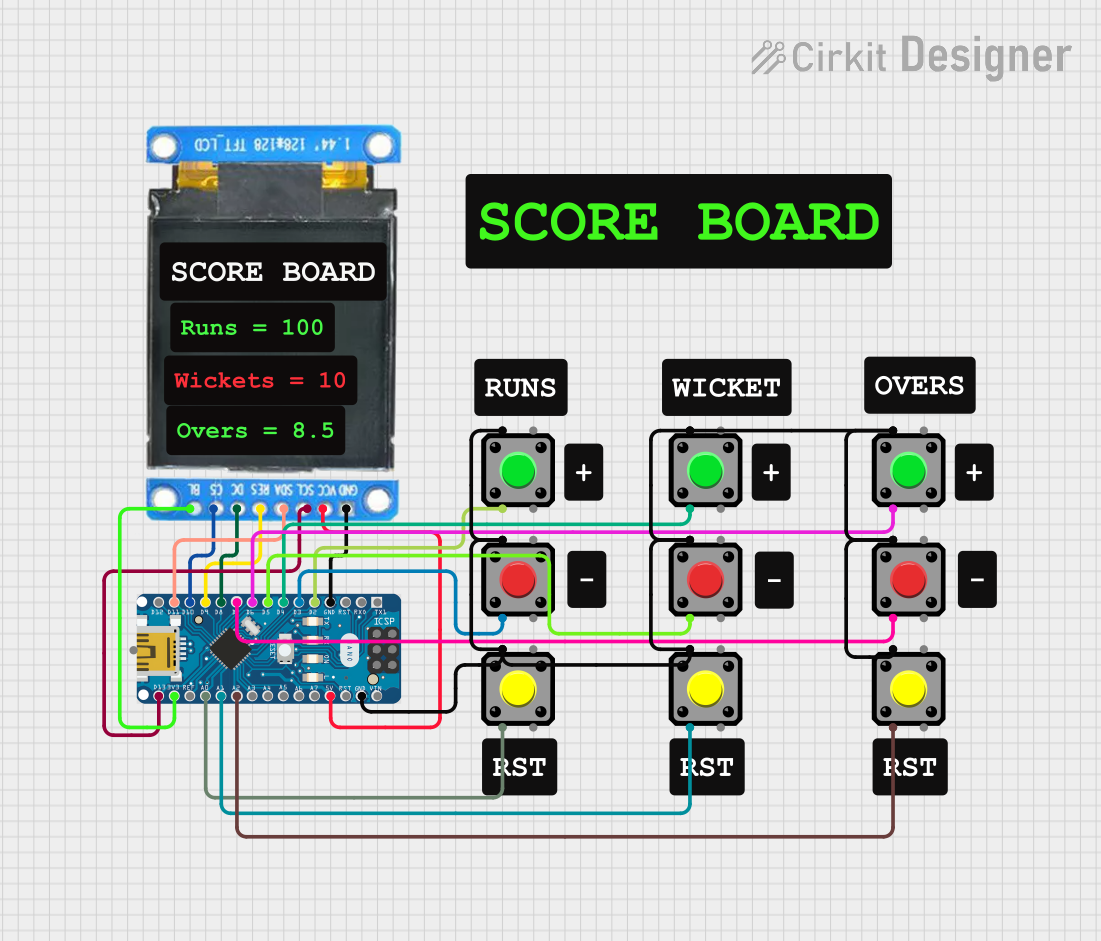
 Open Project in Cirkit Designer
Open Project in Cirkit Designer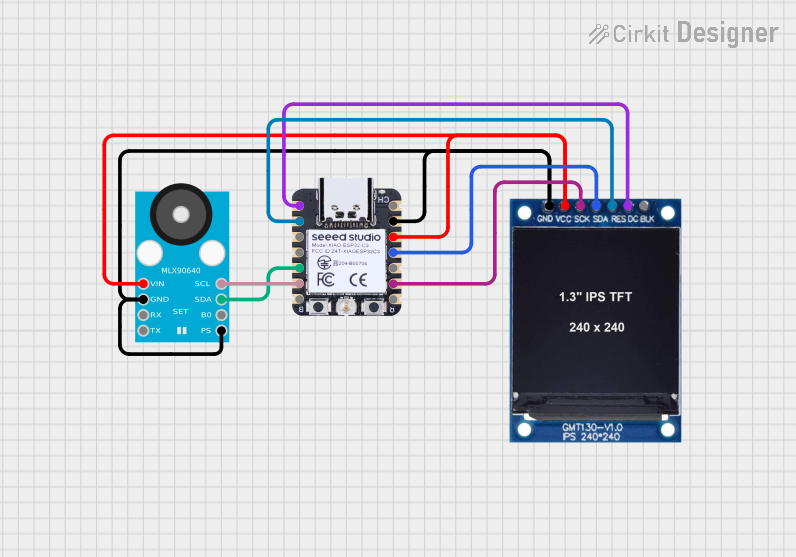
 Open Project in Cirkit Designer
Open Project in Cirkit DesignerExplore Projects Built with 1.54'' TFT Display 240x240 spi ST7789

 Open Project in Cirkit Designer
Open Project in Cirkit Designer
 Open Project in Cirkit Designer
Open Project in Cirkit Designer
 Open Project in Cirkit Designer
Open Project in Cirkit Designer
 Open Project in Cirkit Designer
Open Project in Cirkit DesignerCommon Applications and Use Cases
- Smartwatches and fitness trackers
- IoT dashboards and control panels
- Portable gaming devices
- Embedded systems requiring graphical output
- Educational and hobbyist projects with microcontrollers like Arduino or Raspberry Pi
Technical Specifications
Below are the key technical details and pin configuration for the 1.54'' TFT Display:
Key Technical Details
| Parameter | Specification |
|---|---|
| Display Type | TFT (Thin-Film Transistor) |
| Resolution | 240x240 pixels |
| Driver IC | ST7789 |
| Communication Protocol | SPI (4-wire) |
| Operating Voltage | 3.3V (logic and backlight) |
| Backlight | LED |
| Display Size | 1.54 inches (diagonal) |
| Color Depth | 65K (16-bit RGB) |
| Viewing Angle | Wide (all directions) |
| Operating Temperature | -20°C to 70°C |
Pin Configuration and Descriptions
| Pin Name | Pin Number | Description |
|---|---|---|
| GND | 1 | Ground connection |
| VCC | 2 | Power supply (3.3V) |
| SCL | 3 | Serial Clock Line (SPI clock input) |
| SDA | 4 | Serial Data Line (SPI data input) |
| RES | 5 | Reset pin (active low) |
| DC | 6 | Data/Command control pin |
| CS | 7 | Chip Select (active low) |
| BLK | 8 | Backlight control (connect to 3.3V for always on) |
Usage Instructions
How to Use the Component in a Circuit
- Power Supply: Connect the
VCCpin to a 3.3V power source and theGNDpin to ground. - SPI Communication: Connect the
SCL(clock) andSDA(data) pins to the corresponding SPI pins on your microcontroller. - Control Pins:
- Connect the
RESpin to a GPIO pin for resetting the display. - Use the
DCpin to toggle between data and command modes. - Connect the
CSpin to a GPIO pin to enable or disable the display.
- Connect the
- Backlight: Connect the
BLKpin to 3.3V for constant backlight or to a PWM pin for brightness control.
Important Considerations and Best Practices
- Voltage Levels: Ensure all logic signals are at 3.3V. If using a 5V microcontroller (e.g., Arduino UNO), use level shifters to avoid damaging the display.
- SPI Speed: The ST7789 supports high SPI clock speeds, but start with a moderate speed (e.g., 4 MHz) to ensure stable communication.
- Initialization: The display requires proper initialization commands to function. Use a compatible library (e.g., Adafruit_GFX or TFT_eSPI) to simplify this process.
- Backlight Control: If you want to control the backlight brightness, use a PWM signal on the
BLKpin.
Example Code for Arduino UNO
Below is an example of how to use the 1.54'' TFT Display with an Arduino UNO using the Adafruit_GFX and Adafruit_ST7789 libraries:
#include <Adafruit_GFX.h> // Core graphics library
#include <Adafruit_ST7789.h> // ST7789 driver library
#include <SPI.h> // SPI library
// Define pin connections
#define TFT_CS 10 // Chip Select pin
#define TFT_RST 9 // Reset pin
#define TFT_DC 8 // Data/Command pin
// Initialize the display object
Adafruit_ST7789 tft = Adafruit_ST7789(TFT_CS, TFT_DC, TFT_RST);
void setup() {
// Initialize serial communication for debugging
Serial.begin(9600);
Serial.println("Initializing display...");
// Initialize the display
tft.init(240, 240); // Initialize with 240x240 resolution
tft.setRotation(1); // Set display rotation (0-3)
// Fill the screen with a color
tft.fillScreen(ST77XX_BLACK);
tft.setTextColor(ST77XX_WHITE);
tft.setTextSize(2);
tft.setCursor(10, 10);
tft.println("Hello, World!");
}
void loop() {
// Example: Draw a red rectangle
tft.fillRect(50, 50, 100, 100, ST77XX_RED);
delay(1000);
// Example: Clear the rectangle
tft.fillRect(50, 50, 100, 100, ST77XX_BLACK);
delay(1000);
}
Notes:
- Install the Adafruit_GFX and Adafruit_ST7789 libraries via the Arduino Library Manager.
- Use appropriate level shifters if connecting to a 5V microcontroller.
Troubleshooting and FAQs
Common Issues and Solutions
Display Not Turning On:
- Verify the power connections (
VCCandGND). - Ensure the
BLKpin is connected to 3.3V or a PWM signal.
- Verify the power connections (
No Output on the Screen:
- Check the SPI connections (
SCL,SDA,CS,DC). - Ensure the
RESpin is properly connected and initialized in the code. - Verify that the initialization sequence in the code matches the ST7789 requirements.
- Check the SPI connections (
Flickering or Unstable Display:
- Reduce the SPI clock speed in the code.
- Ensure proper grounding and minimize noise in the circuit.
Incorrect Colors or Artifacts:
- Verify the color format (16-bit RGB) used in the code.
- Check for loose or incorrect connections.
FAQs
Q: Can I use this display with a Raspberry Pi?
A: Yes, the display is compatible with Raspberry Pi. Use libraries like luma.lcd or Pillow for Python-based development.
Q: What is the maximum SPI clock speed supported?
A: The ST7789 can support SPI clock speeds up to 15 MHz, but start with lower speeds for stability.
Q: Can I power the display with 5V?
A: No, the display operates at 3.3V. Use a voltage regulator or level shifters if working with a 5V system.
Q: How do I control the backlight brightness?
A: Connect the BLK pin to a PWM-capable GPIO pin and adjust the duty cycle to control brightness.
This concludes the documentation for the 1.54'' TFT Display 240x240 SPI ST7789.